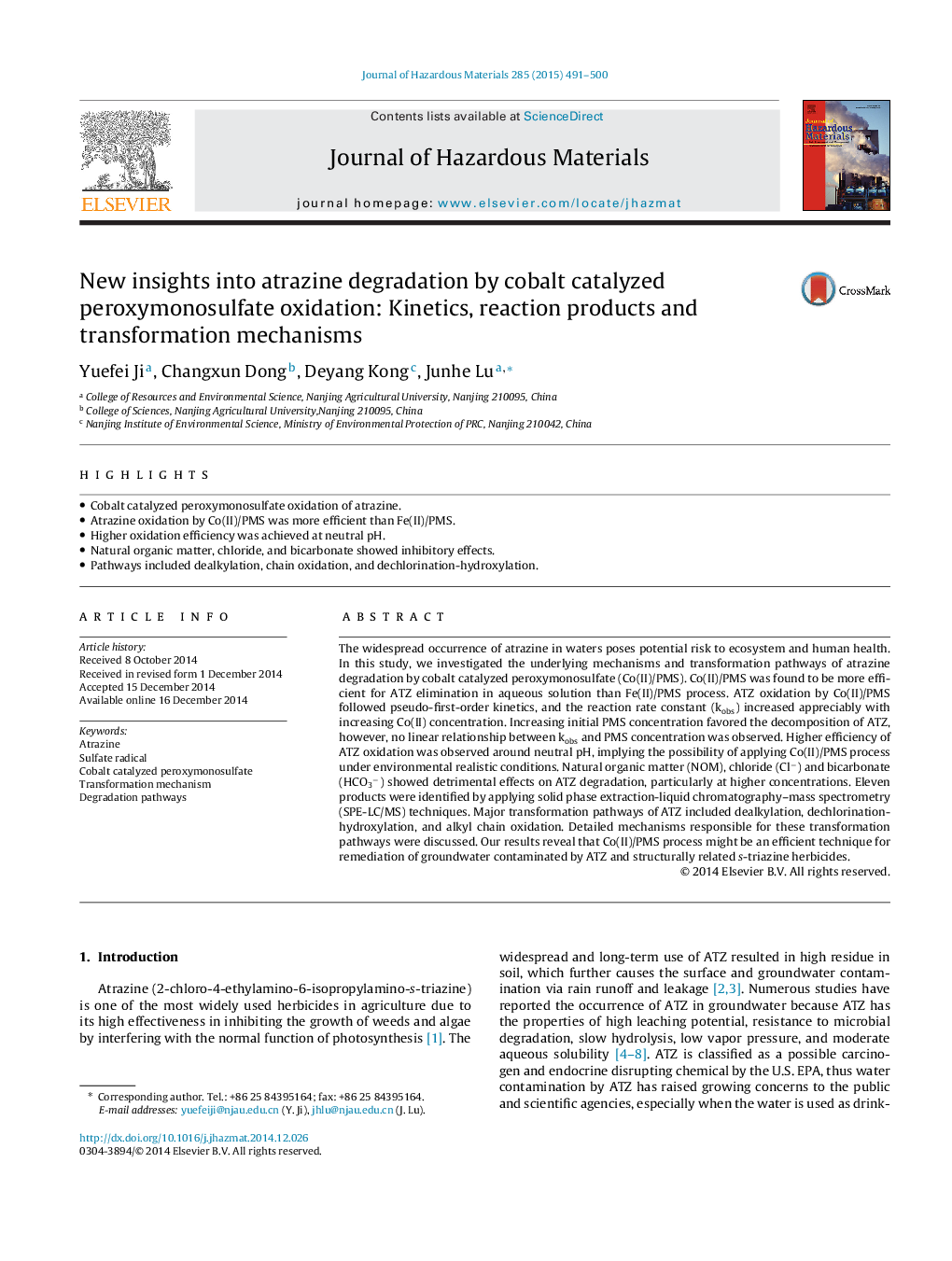| Article ID | Journal | Published Year | Pages | File Type |
|---|---|---|---|---|
| 576464 | Journal of Hazardous Materials | 2015 | 10 Pages |
Abstract
The widespread occurrence of atrazine in waters poses potential risk to ecosystem and human health. In this study, we investigated the underlying mechanisms and transformation pathways of atrazine degradation by cobalt catalyzed peroxymonosulfate (Co(II)/PMS). Co(II)/PMS was found to be more efficient for ATZ elimination in aqueous solution than Fe(II)/PMS process. ATZ oxidation by Co(II)/PMS followed pseudo-first-order kinetics, and the reaction rate constant (kobs) increased appreciably with increasing Co(II) concentration. Increasing initial PMS concentration favored the decomposition of ATZ, however, no linear relationship between kobs and PMS concentration was observed. Higher efficiency of ATZ oxidation was observed around neutral pH, implying the possibility of applying Co(II)/PMS process under environmental realistic conditions. Natural organic matter (NOM), chloride (Clâ) and bicarbonate (HCO3â) showed detrimental effects on ATZ degradation, particularly at higher concentrations. Eleven products were identified by applying solid phase extraction-liquid chromatography-mass spectrometry (SPE-LC/MS) techniques. Major transformation pathways of ATZ included dealkylation, dechlorination-hydroxylation, and alkyl chain oxidation. Detailed mechanisms responsible for these transformation pathways were discussed. Our results reveal that Co(II)/PMS process might be an efficient technique for remediation of groundwater contaminated by ATZ and structurally related s-triazine herbicides.
Related Topics
Physical Sciences and Engineering
Chemical Engineering
Chemical Health and Safety
Authors
Yuefei Ji, Changxun Dong, Deyang Kong, Junhe Lu,
